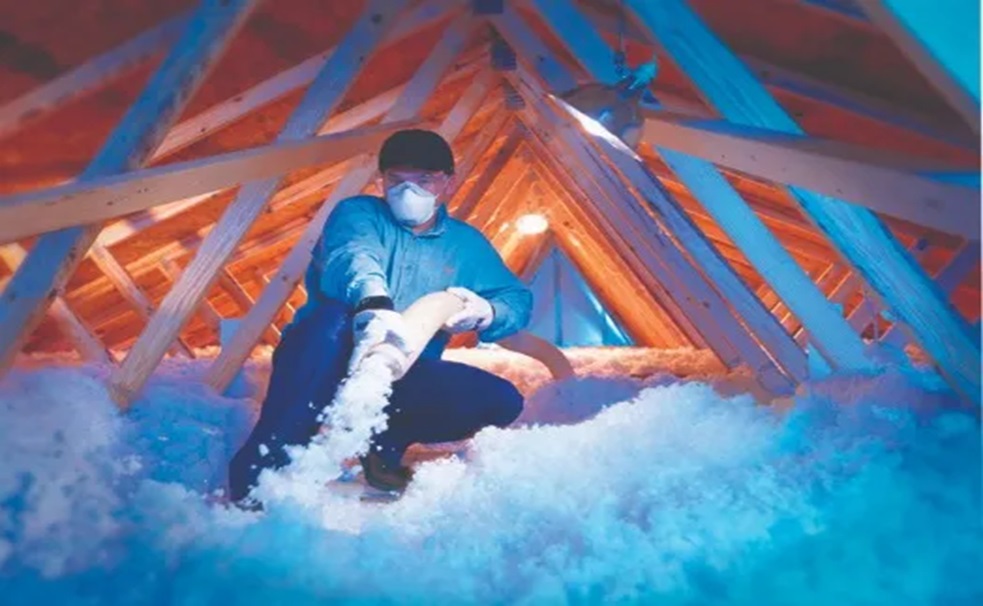Sealing and insulating your home can save you up to 10% on your annual energy bills while improving your home’s comfort in the winter and the summer. The first step is to check your attic and confirm that you need more insulation and probably some air sealing. If so, most people find the best way to get good results is to find a trained insulation contractor, such as https://atticconstruction.
Preparation Before Calling
Before reaching out to a contractor, it’s helpful to gather some key details about the project:
- Determine the current insulation depth on your attic floor in inches. (Refer to guidelines on checking your home’s attic insulation level.)
- Note the approximate dimensions of your attic floor in feet (e.g., 24 ft x 32 ft).
- Confirm whether you have an attic hatch, pull-down stairs, or other means of accessing the attic.
- Consider taking photos of the attic space with your cell phone if it’s safe to do so, as these may assist the contractor in assessing the situation more accurately.
Shop Around – Selecting a Contractor
When selecting an insulation contractor, it’s essential to find one with the necessary equipment and expertise to complete the job efficiently and effectively. While speed is often a benefit of hiring professionals, ensuring you receive fair pricing and quality workmanship is paramount. Rather than relying solely on a search engine, prioritize contractors who are licensed to work in your state, possess insurance coverage, and are trained and certified for the task at hand. Many regions offer incentives for home energy improvements, and utility companies often provide pre-screened lists of licensed and insured contractors on their websites, offering a reliable starting point for your search.
Talking to Contractors on the Phone
When reaching out to a contractor via call or email to schedule an appointment, it’s crucial to address the following points:
- Confirm that the contractor holds valid license and insurance in your state.
- Inquire about the crew’s training and certification for insulation work.
- Emphasize your requirement for sealing attic holes and gaps before insulation installation. If the contractor does not agree to this procedure, consider contacting another professional.
- Specify the type of attic entrance you have (hatch, stairs, door) or if a new opening needs to be made.
- If necessary, inquire about the availability of attic hatch covers or attic door insulation and request a cost estimate.
- Inform the contractor if your home is older (1930s or earlier) and whether there may be ‘knob and tube’ wiring in the attic. If unsure, provide the age of your home.
- Many contractors may prefer to conduct a site visit for a more accurate cost and scope of work estimation. To ensure you receive the best value, obtain estimates from multiple contractors. This allows you to compare costs and scopes of work to ensure comprehensive service.
The Day of the Job
On the day of the job, it’s important to communicate your expectations clearly with the contractor and crew. Don’t hesitate to ask for the following procedures to be followed, ensuring a satisfactory outcome. Maintain a polite yet firm approach when requesting these tasks:
- Request that the crew wear shoe coverings to preserve the cleanliness of your home during the work.
- Ask them to vacuum up any dirt or spilled insulation to maintain tidiness.
- Instruct the crew to notify you promptly if they encounter any wet insulation or detect roof leaks.
- Request immediate notification if there are any indications of pests (such as birds, mice, or squirrels) inhabiting the attic.
- Prior to commencing any work, request that the crew take several photos of the attic floor with your phone or camera. This will serve as a record of the attic’s condition before the job begins.
Make Sure the Job’s Done Right – Things to Consider
When hiring a contractor, it’s crucial to have a clear understanding of the proposed work. Don’t hesitate to ask questions before the contractor commences, and remain engaged throughout the process. Here are some key points to consider:
- Ensure that the project estimate includes the installation of insulation baffles (rafter vents) to maintain proper airflow in the attic.
- Contractors should prioritize sealing air leaks in the attic floor before adding insulation to maximize its performance.
- If there are air ducts in the attic, ensure that contractors avoid stepping on or damaging them. It’s permissible to bury ducts in insulation on the floor, but they should be adequately sealed beforehand to enhance efficiency.
- Unless the existing insulation is wet, moldy, odorous, or contains animal waste, contractors can typically add new insulation on top without removing the old insulation.
- For older recessed light fixtures (can lights) protruding into the attic floor, contractors should cover and seal them using specially designed covers available at most home improvement stores.
- Seal the chase (hole) for plumbing vent pipes and gaps around chimneys or flues with metal flashing and high-temperature caulk.
- Properly weather strip and insulate the attic hatch or door. Off-the-shelf attic hatch insulation products are available for standard-sized openings.
- If there are fuel-burning appliances or equipment in the attic, such as a gas water heater or furnace, it’s recommended to have a professional HVAC contractor conduct combustion safety testing after any air sealing.
- Contractors typically use blown-in, loose fill insulation for attic floors, often made of fiberglass or cellulose with some recycled content. If traditional insulation rolls are used, ensure they are “unfaced” to prevent moisture entrapment.
End of the Job
Upon completion of the job, the contractor should furnish you with documentation detailing the amount of insulation added and the new insulation R-value for your attic. Once the work is finished, consider taking a photograph and comparing it to the earlier pictures to observe the improvement. With the project finalized, you can relax and take pleasure in the enhanced comfort and energy efficiency of your home.

